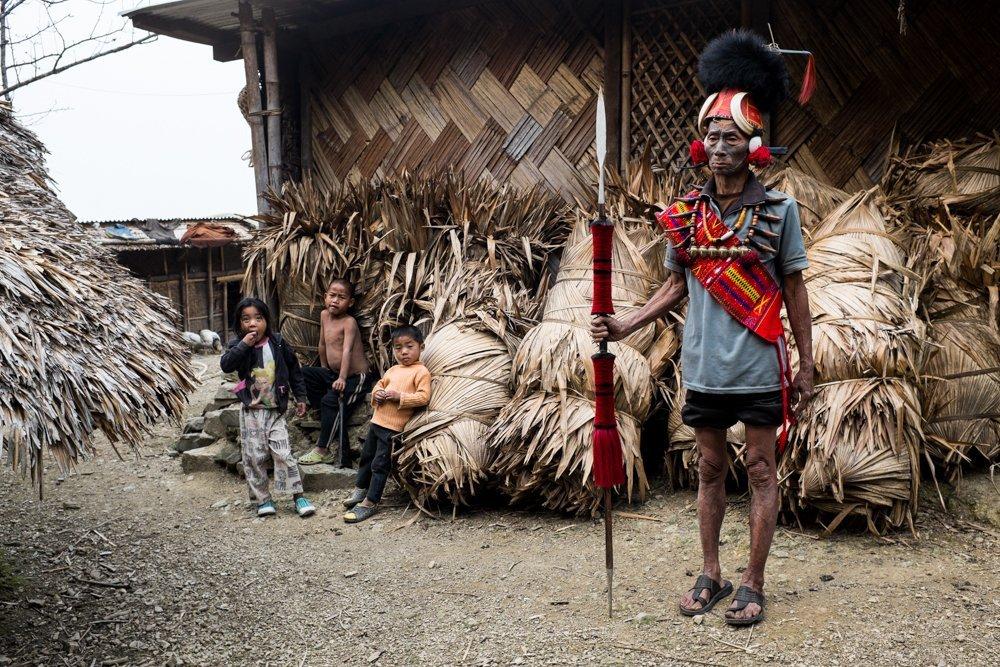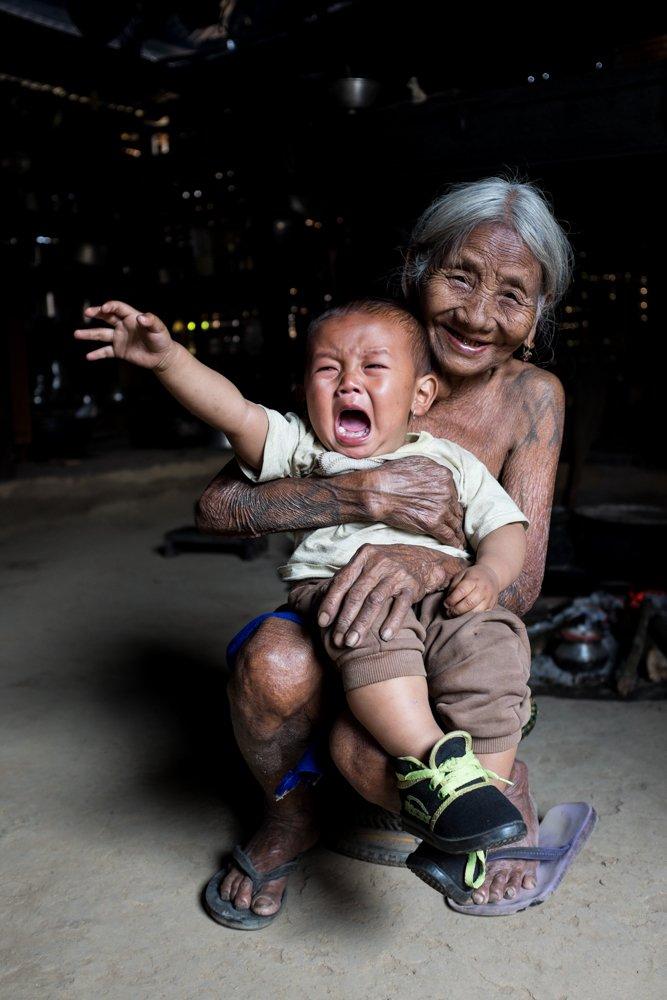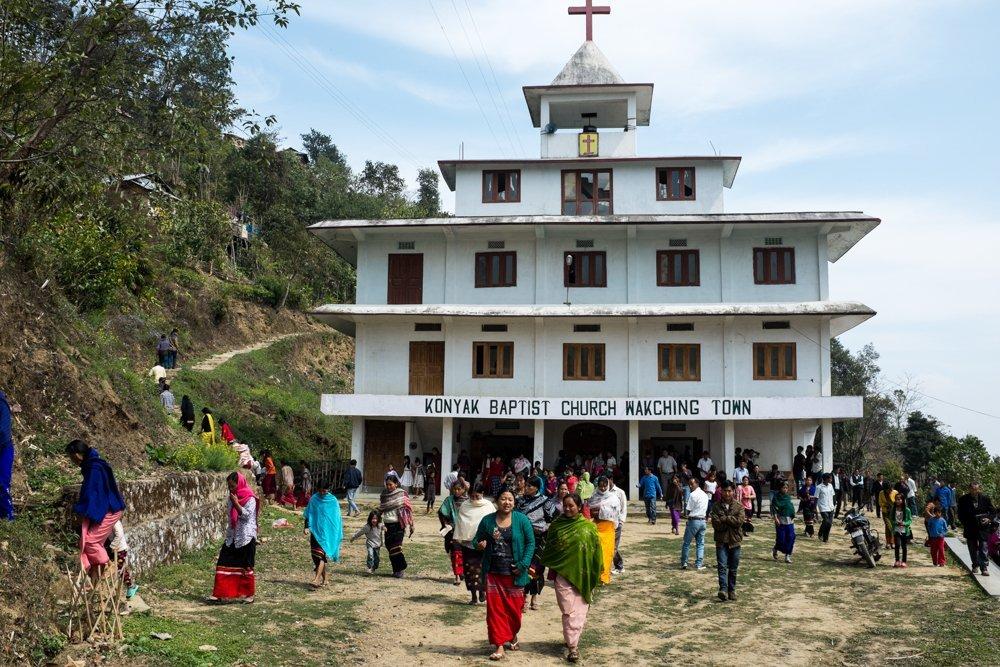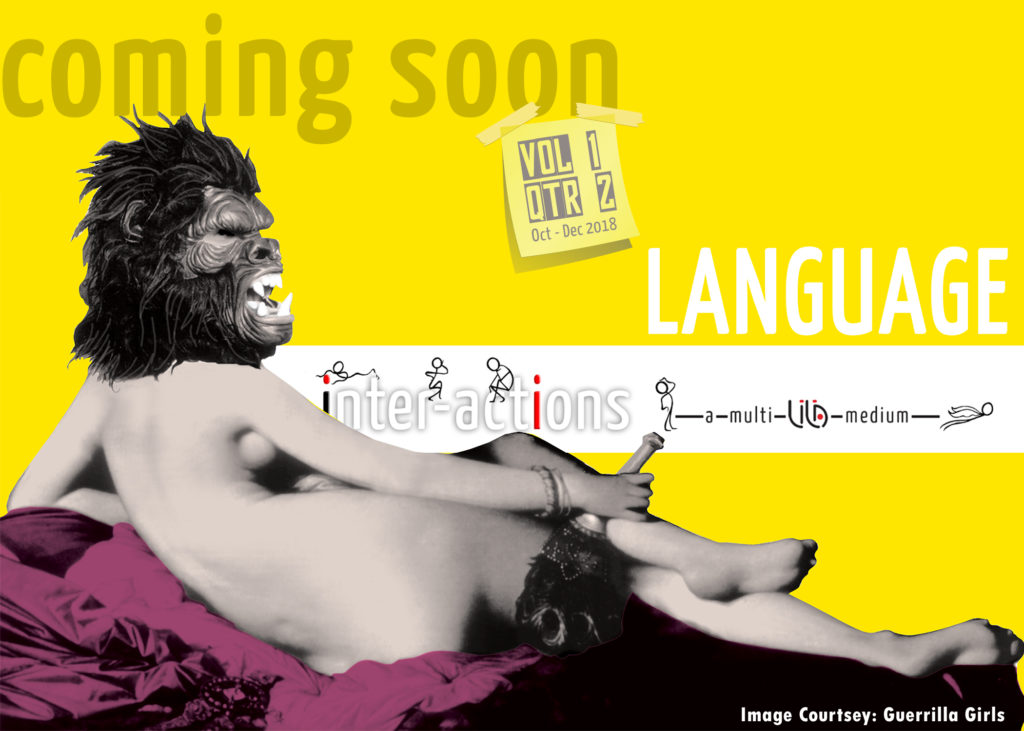You are hiking through the dense forests of Nagaland, somehow protecting yourself from leeches, to reach the nearest village before sundown, or out in a remote rural market to satisfy your visual senses, and you suddenly come face-to-face with people who have tattoos all over their face and body, wearing neck-pieces made of coloured beads, and with stunning animal tusks hiding their ears. You may have just confronted the Konyaks – the last generation of the tattooed headhunting tribe of Nagaland.
General customs of many indigenous tribes scattered in the extreme remote corners of Indian forests and mountains have magnificently enriched the treasure trove of Indian art and culture. The conventional urban perspectives often brand these tribal practices as ‘primitive’ and ‘barbaric’, but in fact these customs have an intricate complexity. They present a primordial system with its own rigorous logic that strengthens the foundations of a particular society and mode of being. The virginal mountainous territory of Nagaland, location of sixteen tribes, is home to one such community – the Konyaks, widely known as the ‘tattooed headhunters’ due to their custom of decapitating the warriors of rival tribes and taking the heads back to the village. The heads were preserved as trophies, and young Konyaks were encouraged to revere these as symbols of their forefathers’ achievements and valour.
Apart from being integral to the Konyak way of life, headhunting also deeply influenced the psychology of the tribe. A severed head was believed to have mystic powers, and be beneficial for the harvest and the overall psychology of the tribe. A preserved head spoke for its owner, and the more heads a warrior acquired, the higher his status in the village would be. The act of acquiring a head, however, was considered complete only when the warrior underwent ritual tattooing – patterns inked in diamond or lozenge shapes – after his victory. Hence, acquiring more heads and thus more status also involved acquiring more tattoos.

Konyak tattoo artists are mostly women. They work intricate motifs using spiked combs crafted from cane or palm and dye extracted from the red cedar tree. The inking process is extremely laborious and consuming for the artist, and creates excruciating pain on the ‘canvas’ of the warrior’s skin. Often, four or five people forcefully hold the warrior down, keeping him still for the duration of the ritual. Expressing pain is considered cowardly, and the warrior demonstrates a very high level of silent endurance. Once the design is complete, it serves to depict the class, status, social position, phase of life and, most importantly, the achievements of the warrior. This organic narration of a life through elaborate motifs is a form of memory, as well as a parallel form of communication. The presence of tattoos makes a Konyak a kind of aristocrat, visually set apart from the rest of society through the power the of comb and ink. However, this elevated status is derived not from material privilege but from proven personal courage, and has great significance within the tribe, even if it has no meaning in urban civilisations.
As a practice, headhunting was a means of settling disputes with enemy tribes, and also a way for a Konyak youth to transition to adulthood, similar to the earlier practice in Masai tribal culture in Africa, of a young man having to kill a lion barehanded in order to prove his eligibility as a groom. Acquiring the right to be someone whose voice would be heard has always been important among the tribes, irrespective of geographical barriers. Perhaps this was the reason for feared headhunters in earlier times going naked, a uniquely purposive, non-sexual, natural exhibition of identity/subjectivity imprinted on the body.
Konyak women too face their fair share of ink and pain. Girls begin to get tattoos on their chest, back, arm, forearm, shin, face including the forehead, and on any other visible site when they are 8-10 years old, whereas the boys get their first tattoos when they are between 12-15 years old. The tattoos on female bodies reveal puberty, marital status and other physical stages of life. Each occasion of the ritual is accompanied by a celebratory feast. And though women also have to enunciate the achievements of their men-folk – father, brother, husband, son – through their own tattoos, that inking is treated as a symbol of honour and not an embedment of patriarchal dominance and control. Konyak women are truly the versatile, creative chroniclers of their tribe. Their tattooing skills are also crucial because the tribe does do not have a written script. All their teachings, rituals, and customs are passed on through oral tradition and visual codes in which poems, songs, sayings and tattoos play major roles.

Colonial missionaries had already set foot in the obscure corners of the subcontinent by 1800, with the sole intention of spreading Christianity. They used education as a tool to lure tribals in every region, and introduced these remote communities to a sense of strange new ‘civilised’ ways of being, thinking, learning and speaking. In 1935 the British government banned headhunting, which severely affected the lives of the Konyaks. Their religious transition to Christianity took deeper root and gradually spread through their society, but could not completely overshadow their tattooing rituals, a mark of their earlier animist faith. Tattooing practice was much alive till the 1970s. As the third decade of the 21st century approaches, almost 98% of the Konyaks have converted to Christianity. But the external influence has not proved to be beneficial other than to provide finite access to Western medicine and education. The ‘gift’ of modernity rips apart the carefully protected net of indigenous knowledge and cultural wisdom, which is part of the mystique of tribal populations. They inevitably lose their deep, self-renewing connection to nature that has sustained them for centuries. It is a point of debate as to how much of this loss can be blamed on direct outside interference with Konyak belief-systems and way of being. It is a fact, however, that with the coming of Christianity the literacy rate has significantly gone up, today enabling many of the younger generation to opt for an easier, urbanised lifestyle outside the region.

With their key tradition outlawed and extinct, and with the governmental apathy regarding their future and the preservation of their unique culture, the Konyaks are now compelled to find alternative – i.e., non-tribal – means to survive However, it is important for them to remember the ways of their forefathers. Phejin Konyak, a member of the Konyak tribe, has attempted to do exactly that. The granddaughter of tattooed headhunter and respected warrior Ahon Konyak, Phejin along with her Dutch photographer friend Peter Bos hiked from one remote Naga village to another to collect stories and folklore about Konyak headhunting customs from the last living former practitioners. Their account is documented in their book The Konyaks: Last of the Tattooed Headhunters (Roli Books, 2017).
A centuries-old custom is dead. But while the material evidence of the controversial practice of headhunting will die along with the last generation of headhunters, tribal tattoos will continue to serve as an organic junction between the past, present and future generations of Konyaks. Through comb and ink this symbolic speech will continue to celebrate a little-known history of war and peace, etched upon living skin and still very present in the hearts of a people.
